Watch this video introduction to the single-line array to become familiar with the different components of the system.
The single-line array is the design we recommend for all first-year farmers.
Back to: Farm Design
The simplest, most straightforward way to grow kelp is with a single-line array. It’s the classic, original design that kelp farmers have been using for decades. A single, horizontal growline is submerged several feet below the surface, wrapped with seed string, and attached to anchors on either end.
The single-line array is the design we recommend for all first-year farmers.
In the diagrams below, you can see both an aerial and profile view of this array design. Notice the three main components of the system: the growline, the buoys, and the anchors.
Single-Line Array Profile View

Single-Line Array Aerial View

The length of line suspended horizontally in the water, where the kelp attaches as it grows. During outplanting, the growline is wrapped with seed string that contains thousands of baby sporophytes. As the kelp grows, the holdfasts come to attach directly to the growline
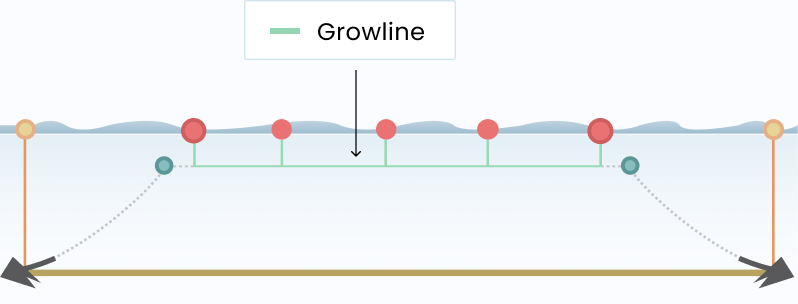
Keep the system afloat
Mark important elements of the array that are concealed underwater
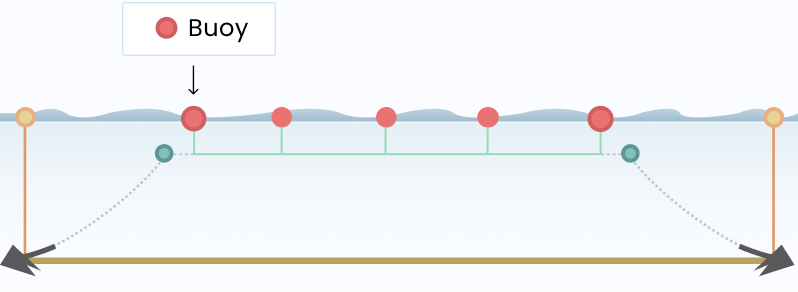
The buoys that keep the kelp afloat are called the growline buoys.
As sugar kelp grows, it becomes heavier and heavier, eventually weighing down the growline so much that, without any flotation, it could sink to the bottom. The growline buoys counteract this force by holding the kelp at the proper depth for ideal growth conditions, typically around 5-6 feet below the surface of the water. The growline buoys also provide an access point to the kelp, allowing the farmer to lift the growline to the surface and inspect the kelp without disturbing its growth. This diagram depicts a typical 200-foot growline with three growline buoys, attached at intervals of 50 feet. In the Farm Design Tool, we recommend using a buoy every 50-65 feet.
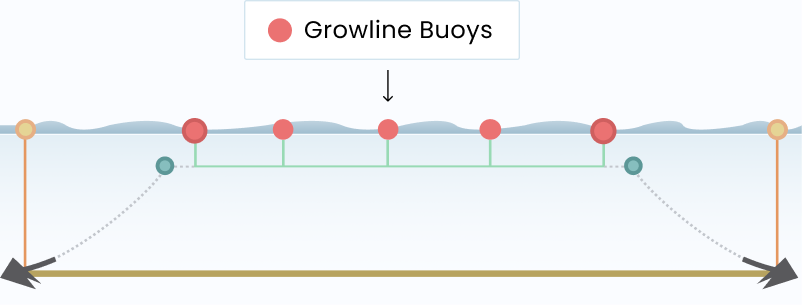
You might find you are able to maintain enough buoyancy with fewer buoys, especially early in the season when the young kelp isn’t adding substantial weight to the growline. Too much buoyancy early on can cause the growlines to surface during bad weather and cause damage to your crop. After outplanting, we mark the buoy connection points with a small cork that can easily be swapped out for a buoy later in the season.
Anchor line buoys mark the connection point between the growline and the anchor line on either side of the array.
Typically, the anchor line buoys are larger than the growline buoys. Some farmers also use brightly colored buoys or buoys with hazard markings (referred to as regulatory marker buoys or RMBs) to mark the perimeter of their site.

The anchors are what tether your array to the seafloor, hold it in place, and help maintain tension. The anchors are connected to the growline by an anchor line and, sometimes, a length of chain. Together, the segment that attaches the floating portion of the array to the anchor on the bottom is called the anchor rode
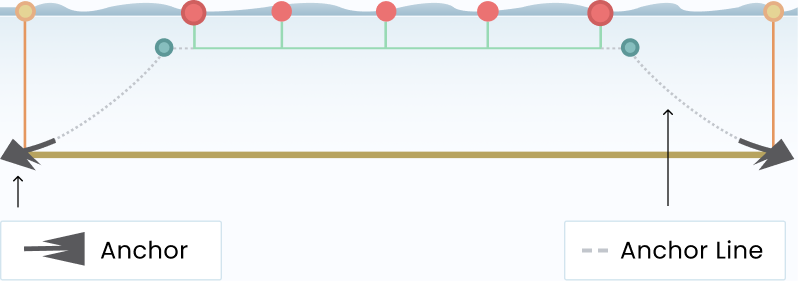
In the diagram, you’ll notice we’ve incorporated the use of a tensioning buoy along the span of the anchor line.
This small buoy raises in position in the water at low tide, helping to maintain tension on the growline as the water level fluctuates. Tag lines run from the anchor to a retrieval buoy on the surface, which helps farmers locate the anchor for retrieval or tensioning.
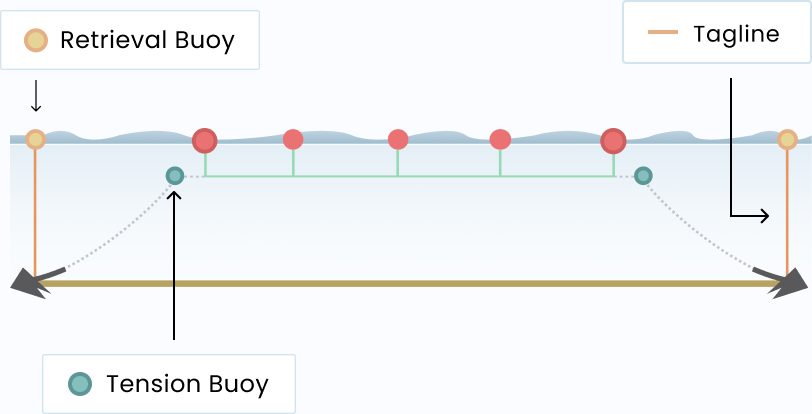
We recommend new farmers start with the single-line array before trying anything more complicated; it’s the tried and true method of cultivating sugar kelp.

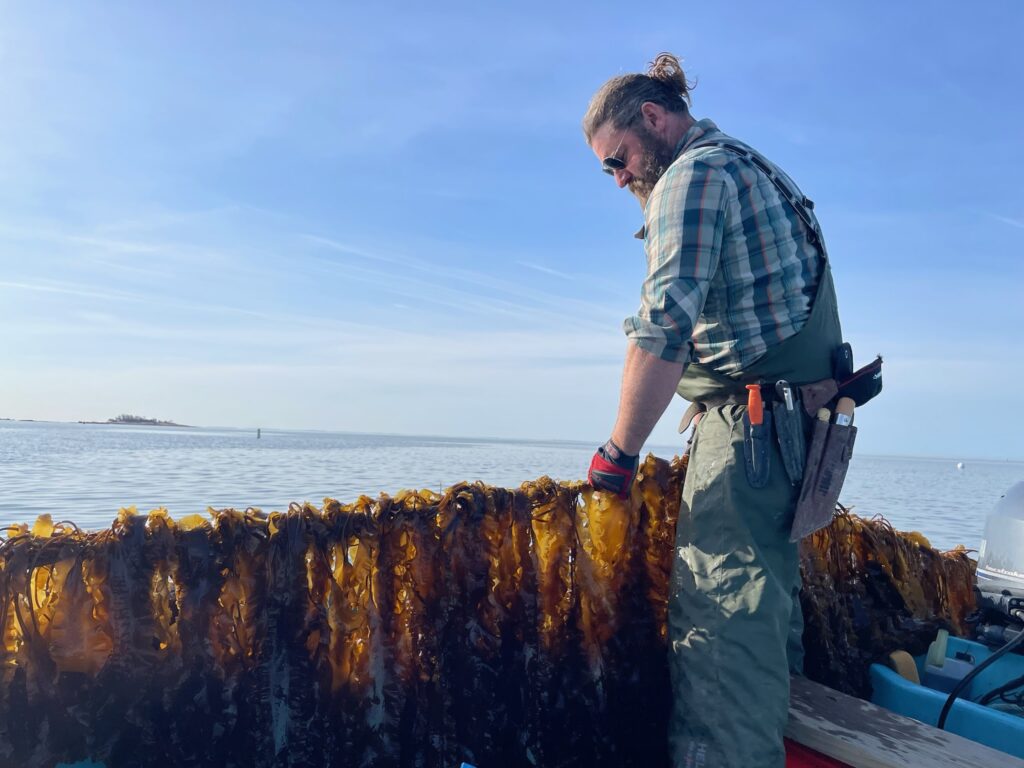
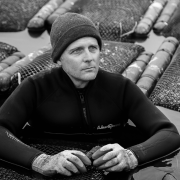
Farmer and researcher Mike Doall from Stony Brook University has pioneered a type of shallow-water kelp farming in the estuaries of Long Island that requires less than $100 per array in startup costs and can be fully accessed without a boat. This type of system doesn’t work in every environment, but it has been highly successful for farmers in Long Island. Learn more about this low-cost setup here.
Watch this video as farmers Mike Doall and Paul McCormick take you through their journeys with shallow water farming.
WATCH VIDEO